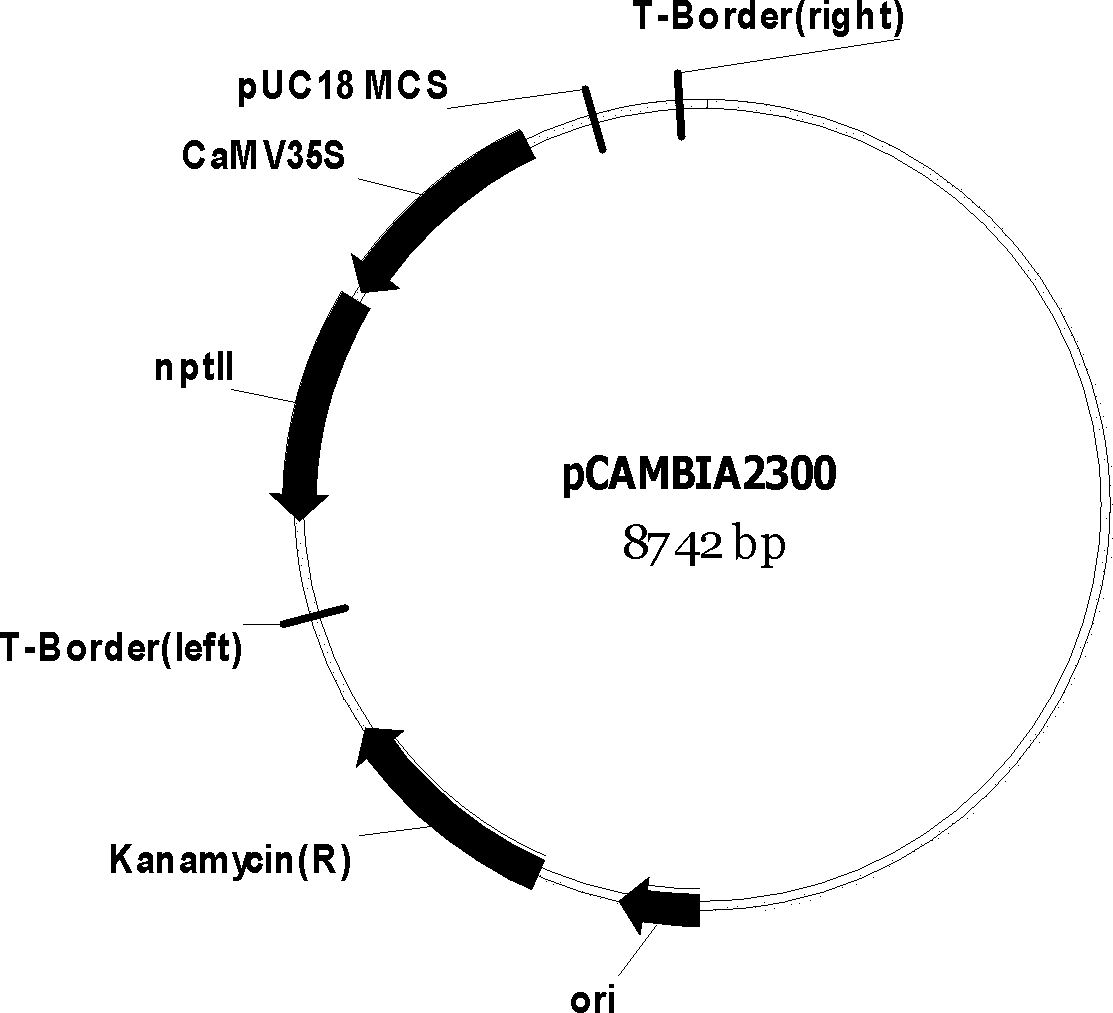Snailflower citric acid transporter gene VuMATE and use thereof
A technology of citric acid and transporter, applied in application, genetic engineering, plant genetic improvement and other directions, can solve the problems of difficulty in obtaining economic and ecological benefits, destroying soil structure, reducing bioavailability, etc., and improving the secretion of citric acid. , major application prospects, the effect of improving the resistance of aluminum
- Summary
- Abstract
- Description
- Claims
- Application Information
AI Technical Summary
Problems solved by technology
Method used
Image
Examples
Embodiment 1
[0054] Embodiment 1, the cloning of rice bean citrate transporter gene:
[0055] Soak the surface-sterilized rice bean seeds in deionized water overnight, wrap them with moist gauze and place them in a dark room at 25°C to germinate them. 2 (pH4.5) solution grows in the dark on the net basket, puts it under light conditions when the root length is about 3cm, and transfers the net basket to 0.5mMCaCl containing 25μM Al when the root length grows to 4-5cm 2 (pH4.5) solution, after 12 hours of treatment, a 1 cm root tip was cut with a clean blade for RNA extraction. Use Oligod(T) 18 The cDNA synthesized by reverse transcription for the primers serves as a template for subsequent homologous cloning. Oligo d(T) 18 It is a known technology, and the specific sequence is 18 consecutive Ts.
[0056] According to the known citrate transporter genes (SbMATE, HvMATE1, AtMATE) in sorghum, barley, Arabidopsis and the possible citrate transporter genes (LaMATE, GmA1Tsb1, MtMATE, Os10g02...
Embodiment 2
[0063] Embodiment 2, the construction of constitutive expression transgene vector:
[0064] Binary vector pCAMBIA2300 ( figure 1 ) is a plant transgenic vector mediated by Agrobacterium, and there is a complete selection marker gene expression cassette in the vector, that is, the kanamycin resistance gene driven by the 35S promoter. There is a multiple cloning site (pUC18 MCS) for gene cloning upstream of the 35S promoter. In this experiment, the cauliflower mosaic virus constitutive promoter CaMV35S, green fluorescent protein GFP and pear ribulose-1,5-bisphosphate carboxylase / plus Oxygenase gene terminator nos, get the transformed pCAMBIA2300 vector. The rice bean citrate transporter gene VuMATE was forward inserted between the CaMV35S promoter and the green fluorescent protein GFP of the transformed pCAMBIA2300 vector to obtain the transgenic vector pRBM( figure 2 ). The primers for the VuMATE sequence used for transgenesis are: VuMATE-TF: CGGGGTACCTTAATGGAAGAGAATGG and...
Embodiment 3
[0065] Embodiment 3, tomato transformation:
[0066] The binary transgene vector pRBM was transformed into the Agrobacterium tumefaciens strain EHA105 by electroporation to obtain the EHA105 strain containing the binary plasmid vector, and the EHA105 strain containing the binary plasmid vector was used to transform tomato. Specifically:
[0067] Disinfect the ripe tomato seeds, soak them in sterile water and shake them on a shaker until they are white, and then sow them on 1 / 2 MS medium. When the cotyledons are fully unfolded and the true leaves are just exposed, cut off the tip and base of the cotyledons. Cut into 0.5cm 2 The small pieces were placed on the pre-medium with the off-axis side down and pre-cultured for 2 days at 25°C in the dark, and they were used as transformed receptors. Infect tomato leaf discs with strain EHA105 containing a binary plasmid vector, culture for 3 days in the dark at 25°C, and obtain resistance after selection on selection medium containing ...
PUM
 Login to View More
Login to View More Abstract
Description
Claims
Application Information
 Login to View More
Login to View More - R&D
- Intellectual Property
- Life Sciences
- Materials
- Tech Scout
- Unparalleled Data Quality
- Higher Quality Content
- 60% Fewer Hallucinations
Browse by: Latest US Patents, China's latest patents, Technical Efficacy Thesaurus, Application Domain, Technology Topic, Popular Technical Reports.
© 2025 PatSnap. All rights reserved.Legal|Privacy policy|Modern Slavery Act Transparency Statement|Sitemap|About US| Contact US: help@patsnap.com



